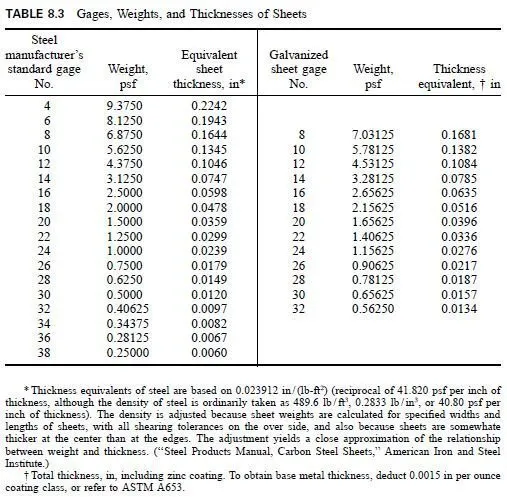When strength alone, particularly yield strength, is an all-important consideration in selecting a material or grade for cold-formed shapes (Table 8.2), it is sometimes possible to take advantage of the strength increase that results from cold working of material during the forming operation and thus use a lower-strength, more workable, and possible more economical grade than would otherwise be required. The increase in cold-work strength is ordinarily most noticeable in relatively stocky, compact sections produced in thicker steels. Cold-formed chord sections for openweb steel joists are good examples (Fig. 8.22). Overall average yield strengths of more than 150% of the minimum specified yield strength of the plain material have been obtained in such sections.
The strengthening effect of the forming operation varies across the section but is most pronounced at the bends and corners of a cold-formed section. Accordingly, for shapes in which bends and corners constitute a high percentage of the whole section, cold working increases the overall strength more than for shapes having a high proportion of thin, wide, flat elements that are not heavily worked in forming.
For the latter type of shapes, the strength of the plain, unformed sheet or strip may be the controlling factor in the selection of a grade of material.
Full-section tests constitute a relatively simple, straightforward method of determining as-formed strength. They are particularly applicable to sections that do not contain any elements that may be subject to local buckling. However, each case has to be considered individually in determining the extent to which cold forming will produce an increase in utilizable strength. For further information, refer to the AISI Specification for the Design of Cold-Formed Steel Structural Members and its Commentary, 1996, American Iron and Steel Institute, 1101 17th St., NW, Washington, DC 20036.
